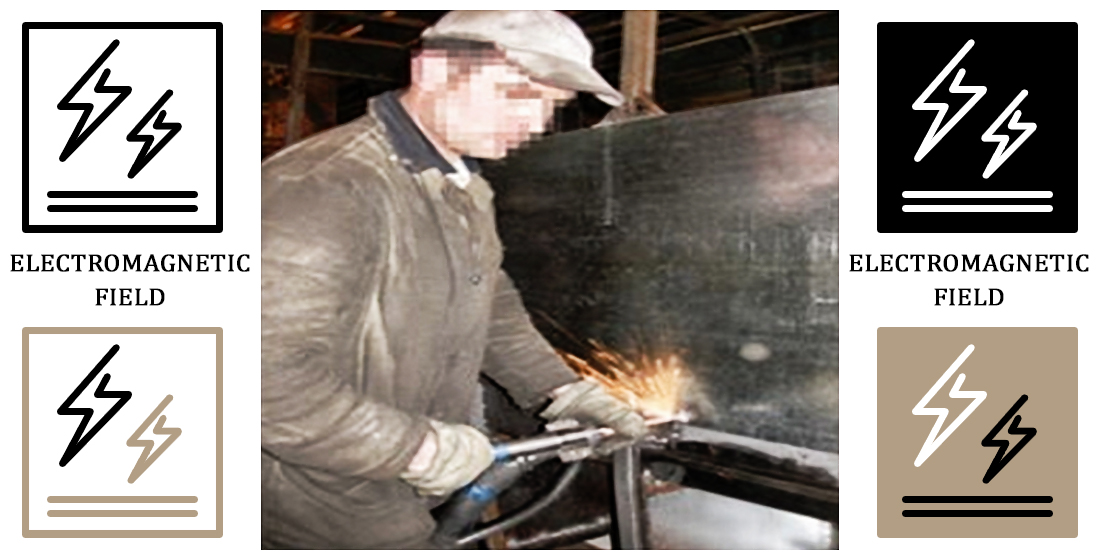Determining patterns in the generation of magnetic fields when using different contact welding techniques
DOI:
https://doi.org/10.15587/1729-4061.2022.268699Keywords:
contact welding, magnetic field, field intensity, oscillograms, spectrograms, welder protectionAbstract
The object of this study is the quantitative characteristics of magnetic fields induced during electric contact welding in various ways: contact point, arc-butt, capacitor point, contact-butt continuous, and pulsating fusion. The problem to be solved is the lack of necessary information regarding the electromagnetic safety of these welding techniques. A description of the proposed methodological approaches to determining the levels of magnetic fields, their measurement tools, and methods for assessing their impact on the welder's body is given. Based on the analysis and processing of the acquired oscillograms and spectrograms of magnetic fields, their quantitative characteristics were measured. To determine the general level of the polyfrequency magnetic field arising at contact welding, the proposed generalized indicator of the level of the magnetic field was used. It was established that during contact point welding by a stationary machine, the level of the magnetic field exceeds the maximum permissible value at the workplace in the range of 50–1000 Hz at a distance of 0.3 m from the welding electrodes. When manually welding in this way, the magnetic field level exceeds the permissible level in the frequency bands of 5–50, 50–1000 Hz directly near the electrical cable. Capacitor spot welding with direct current is characterized by exceeding the maximum permissible MP at the workplace in the high-frequency range of 1000–10000 Hz. During arc-butt welding, no excess of the maximum permissible levels of the magnetic field was detected at the workplace. It is shown that the spectral composition and magnitude of the magnetic field signal is determined by the welding technique and the initial parameters of power supplies. Orimani results can be used in the field of welding production and labor protection.
References
- Modenese, A., Gobba, F. (2021). Occupational Exposure to Electromagnetic Fields and Health Surveillance according to the European Directive 2013/35/EU. International Journal of Environmental Research and Public Health, 18 (4), 1730. doi: https://doi.org/10.3390/ijerph18041730
- Stam, R. (2018). Comparison of international policies on electromagnetic fields (power frequency and radiofrequency fields). National Institute of Public Health and the Environment. Available at: https://rivm.openrepository.com/bitstream/handle/10029/623629/2018998.pdf?sequence=1
- Yamaguchi-Sekino, S., Ojima, J., Sekino, M., Hojo, M., Saito, H., Okuno, T. (2011). Measuring Exposed Magnetic Fields of Welders in Working Time. Industrial Health, 49 (3), 274–279. doi: https://doi.org/10.2486/indhealth.ms1269
- Weingrill, L., Krutzler, J., Enzinger, N. (2016). Temperature Field Evolution during Flash Butt Welding of Railway Rails. Materials Science Forum, 879, 2088–2093. doi: https://doi.org/10.4028/www.scientific.net/msf.879.2088
- Hu, S., Haselhuhn, A. S., Ma, Y., Li, Z., Qi, L., Li, Y. et al. (2021). Effect of external magnetic field on resistance spot welding of aluminium to steel. Science and Technology of Welding and Joining, 27 (2), 84–91. doi: https://doi.org/10.1080/13621718.2021.2013707
- Qi, L., Zhang, Q., Niu, S., Chen, R., Li, Y. (2021). Influencing mechanism of an external magnetic field on fluid flow, heat transfer and microstructure in aluminum resistance spot welding. Engineering Applications of Computational Fluid Mechanics, 15 (1), 985–1001. doi: https://doi.org/10.1080/19942060.2021.1938684
- Michałowska, J., Przystupa, K., Krupski, P. (2020). Empirical assessment of the MAG welder's exposure to an electromagnetic field. Przegląd Elektrotechniczny, 1 (12), 224–227. doi: https://doi.org/10.15199/48.2020.12.48
- Levchenko, O., Polukarov, Y., Goncharova, O., Bezushko, O., Arlamov, O., Zemlyanska, O. (2022). Determining patterns in the generation of magnetic fields when using different arc welding techniques. Eastern-European Journal of Enterprise Technologies, 2 (10 (116)), 50–56. doi: https://doi.org/10.15587/1729-4061.2022.254471
- Levchenko, O. G., Levchuk, V. K., Goncharova, O. N. (2012). Spatial distribution of magnetic field and its minimization in resistance spot welding. The Paton Welding Journal, 8, 47–51. Available at: https://patonpublishinghouse.com/tpwj/pdf/2012/pdfarticles/08/11.pdf
- Levchenko, O. (2020). Methodology of determination of the of multifrequency magnetic field level at welder`s working zone. Labour Protection Problems in Ukraine, 36 (4), 3–7. doi: https://doi.org/10.36804/nndipbop.36-4.2020.3-7
- Pro zatverdzhennia Derzhavnykh sanitarnykh norm ta pravyl pry roboti z dzherelamy elektromahnitnykh poliv (DSNiP 3.3.6.096-2002). Ministerstvo Okhorony Zdorovia Ukrainy. Nakaz 18.12.2002 No. 476. Available at: https://zakon.rada.gov.ua/laws/show/z0203-03#Text
- Tan, L., Jiang, J. (2019). Digital signal processing: fundamentals and applications. Academic Press. doi: https://doi.org/10.1016/C2017-0-02319-4

Downloads
Published
How to Cite
Issue
Section
License
Copyright (c) 2022 Oleg Levchenko, Yury Polukarov, Olga Goncharova, Olga Bezushko, Olexandr Arlamov, Olena Zemlyanska

This work is licensed under a Creative Commons Attribution 4.0 International License.
The consolidation and conditions for the transfer of copyright (identification of authorship) is carried out in the License Agreement. In particular, the authors reserve the right to the authorship of their manuscript and transfer the first publication of this work to the journal under the terms of the Creative Commons CC BY license. At the same time, they have the right to conclude on their own additional agreements concerning the non-exclusive distribution of the work in the form in which it was published by this journal, but provided that the link to the first publication of the article in this journal is preserved.
A license agreement is a document in which the author warrants that he/she owns all copyright for the work (manuscript, article, etc.).
The authors, signing the License Agreement with TECHNOLOGY CENTER PC, have all rights to the further use of their work, provided that they link to our edition in which the work was published.
According to the terms of the License Agreement, the Publisher TECHNOLOGY CENTER PC does not take away your copyrights and receives permission from the authors to use and dissemination of the publication through the world's scientific resources (own electronic resources, scientometric databases, repositories, libraries, etc.).
In the absence of a signed License Agreement or in the absence of this agreement of identifiers allowing to identify the identity of the author, the editors have no right to work with the manuscript.
It is important to remember that there is another type of agreement between authors and publishers – when copyright is transferred from the authors to the publisher. In this case, the authors lose ownership of their work and may not use it in any way.









